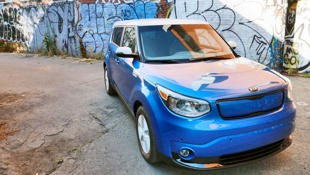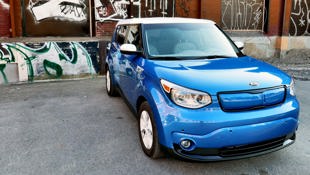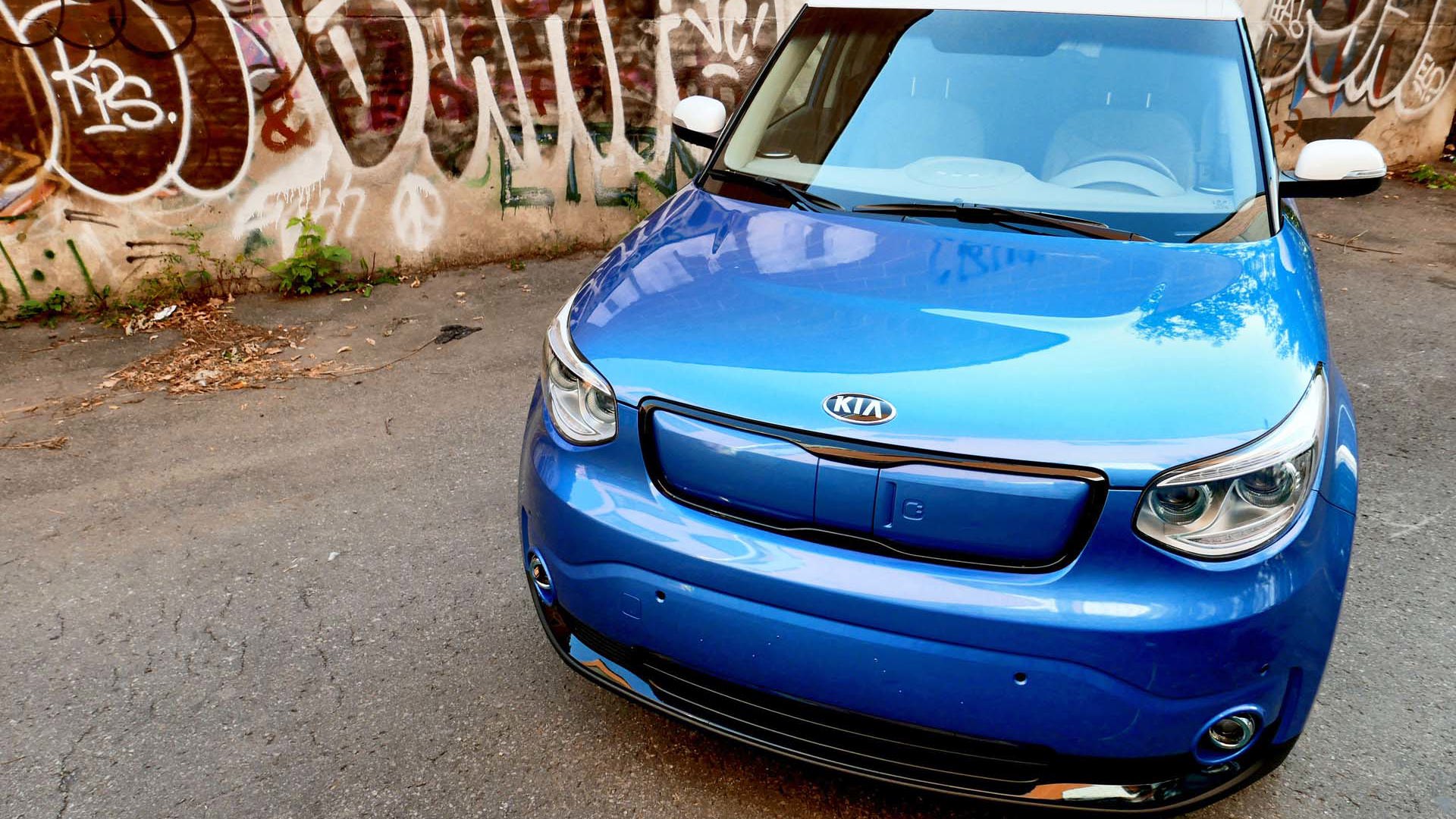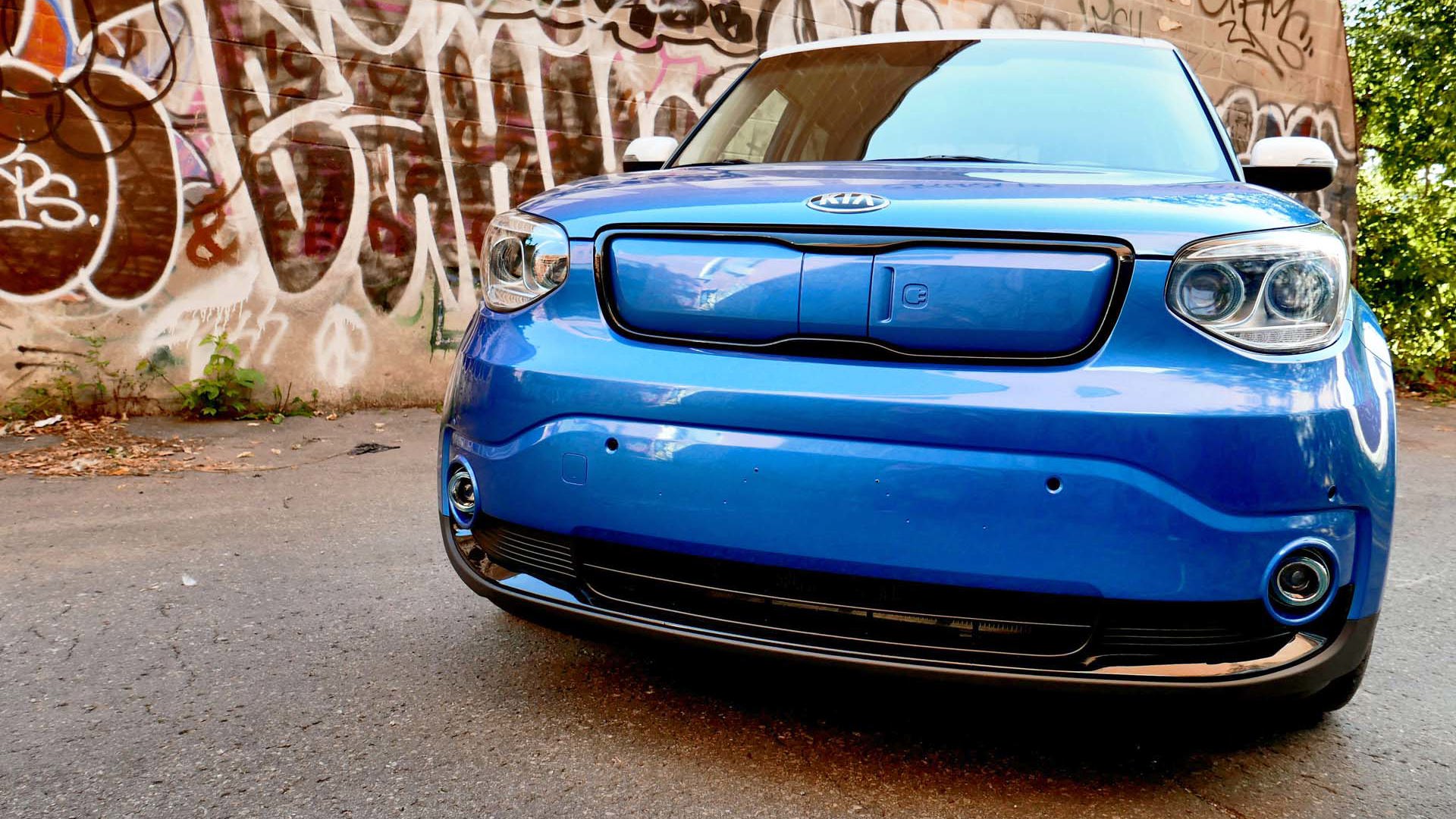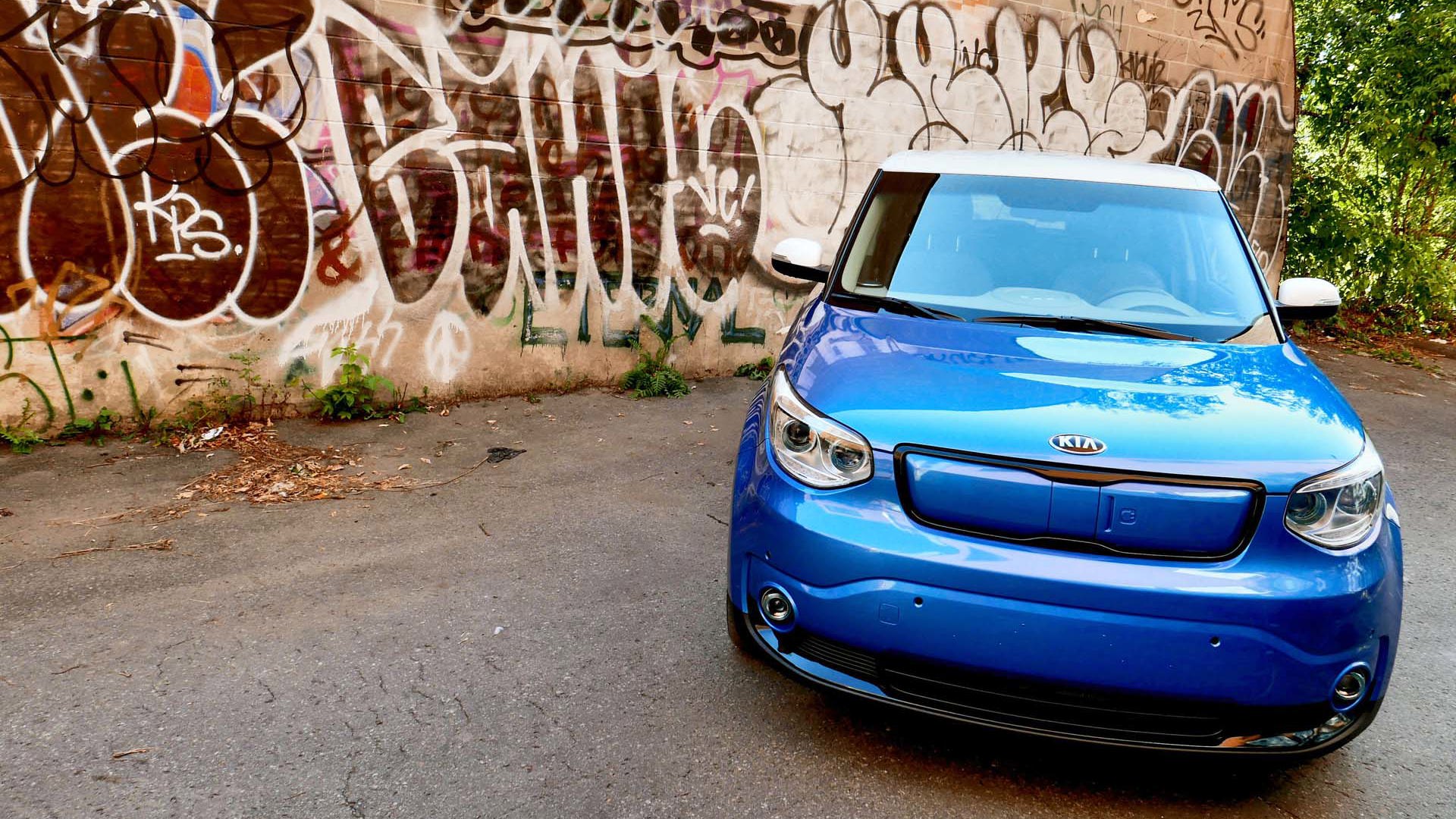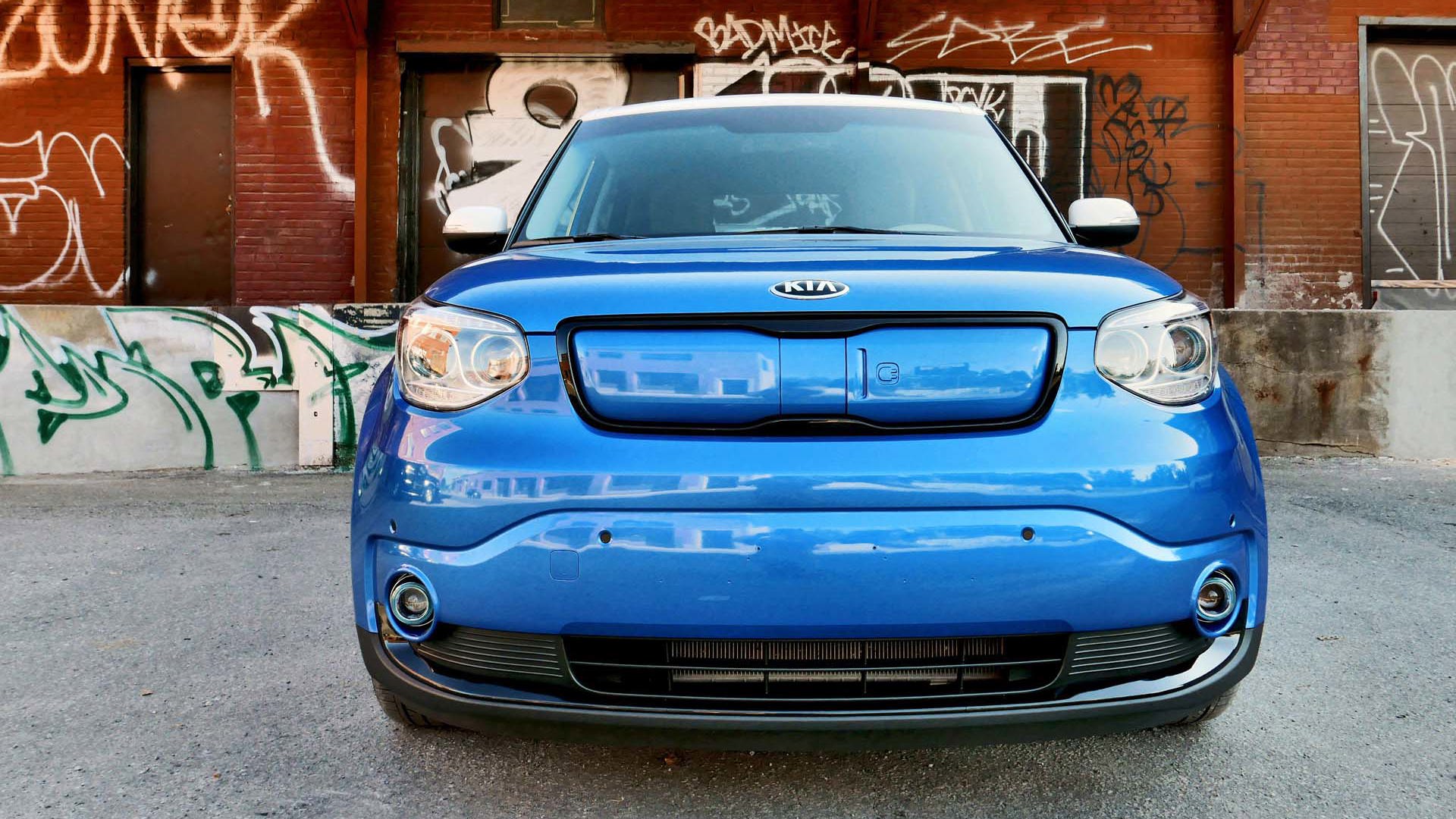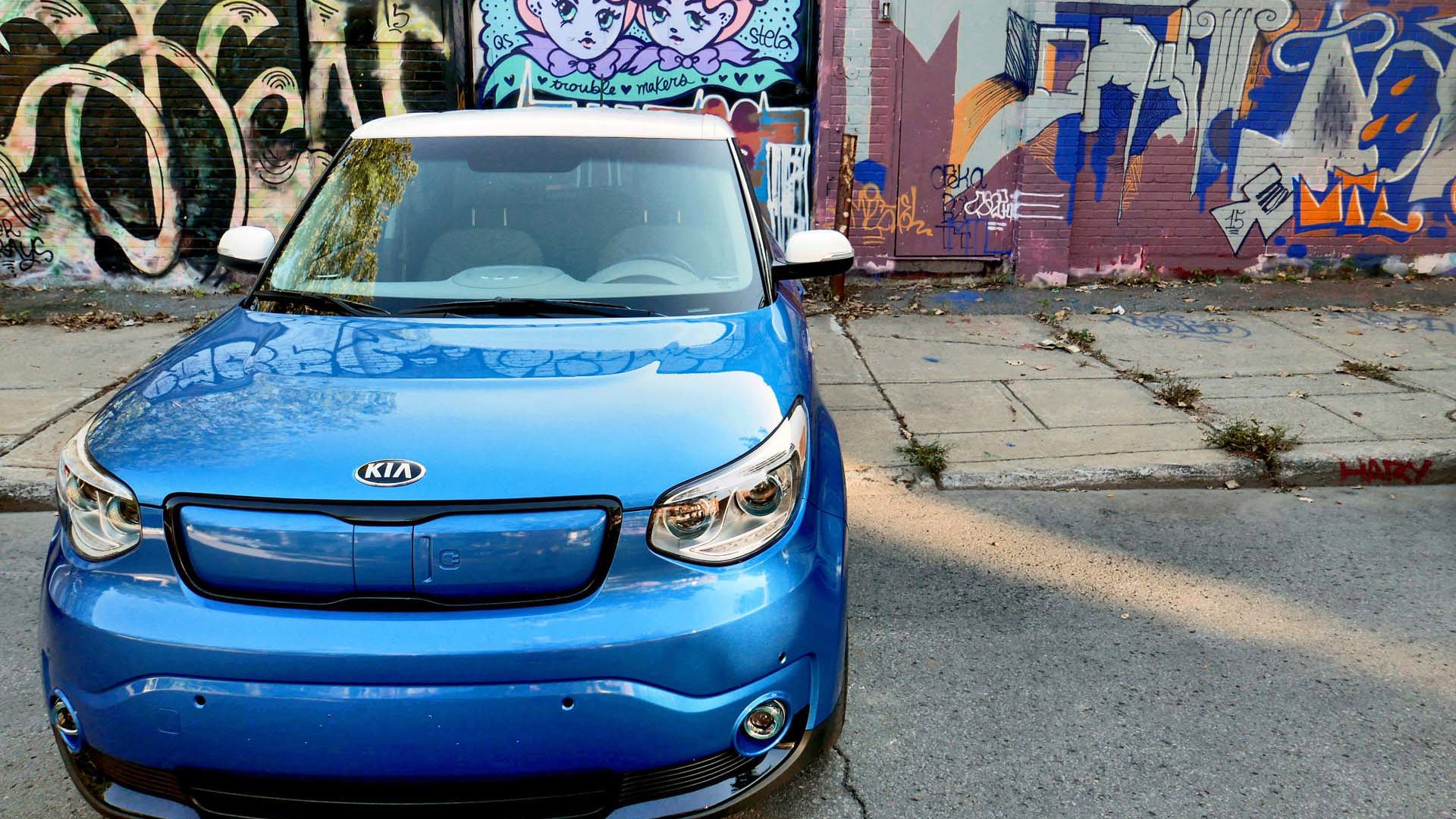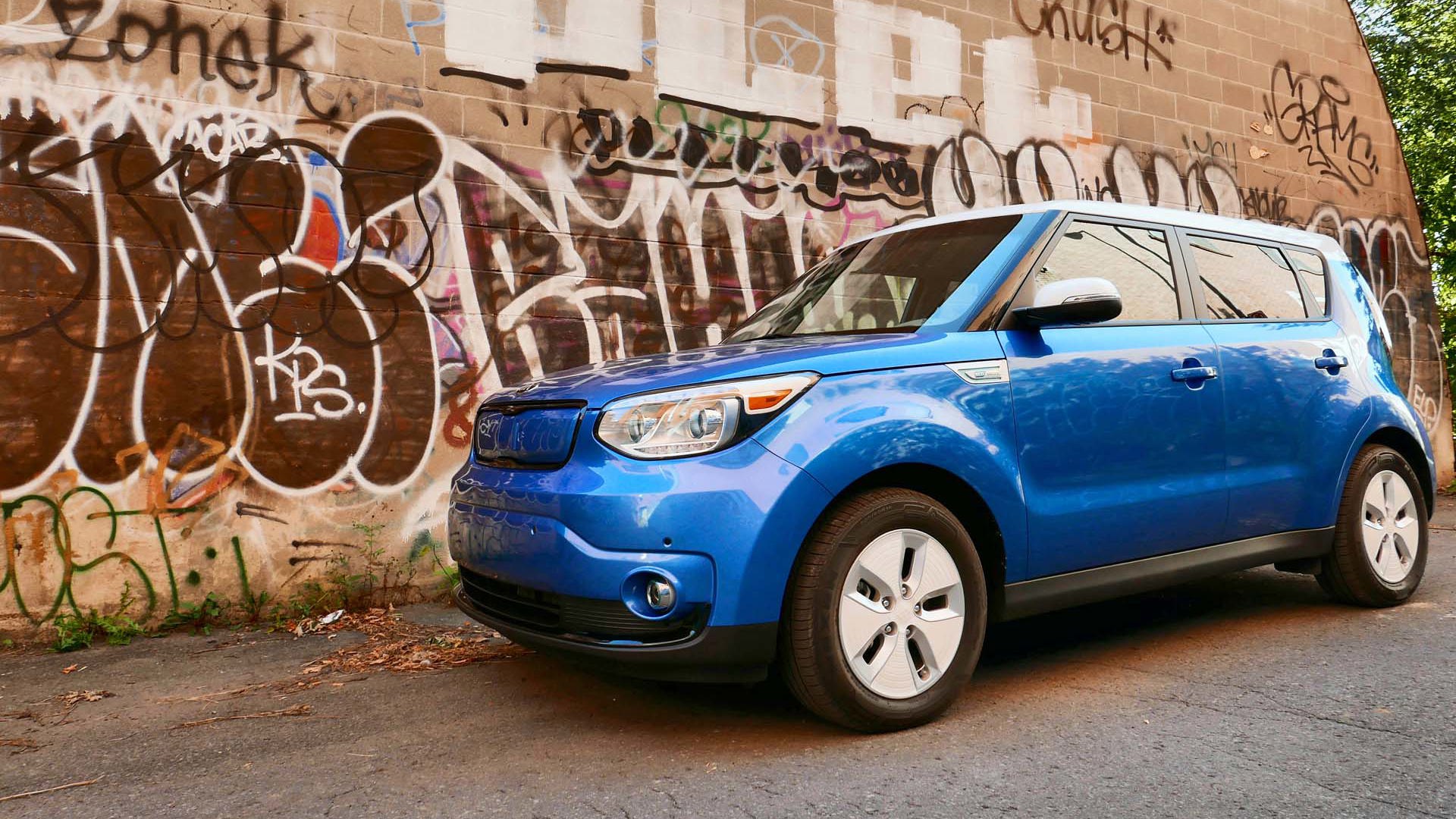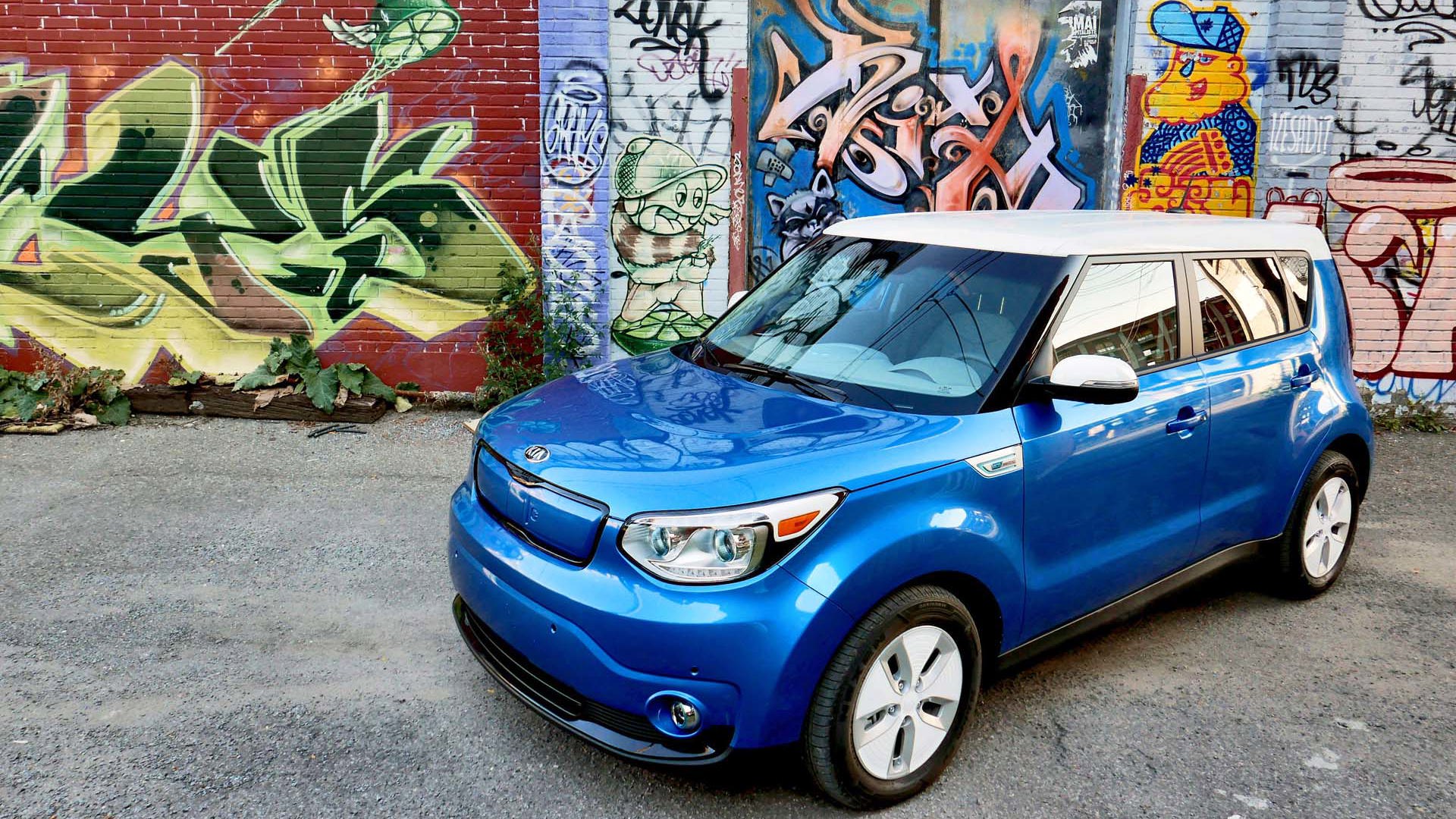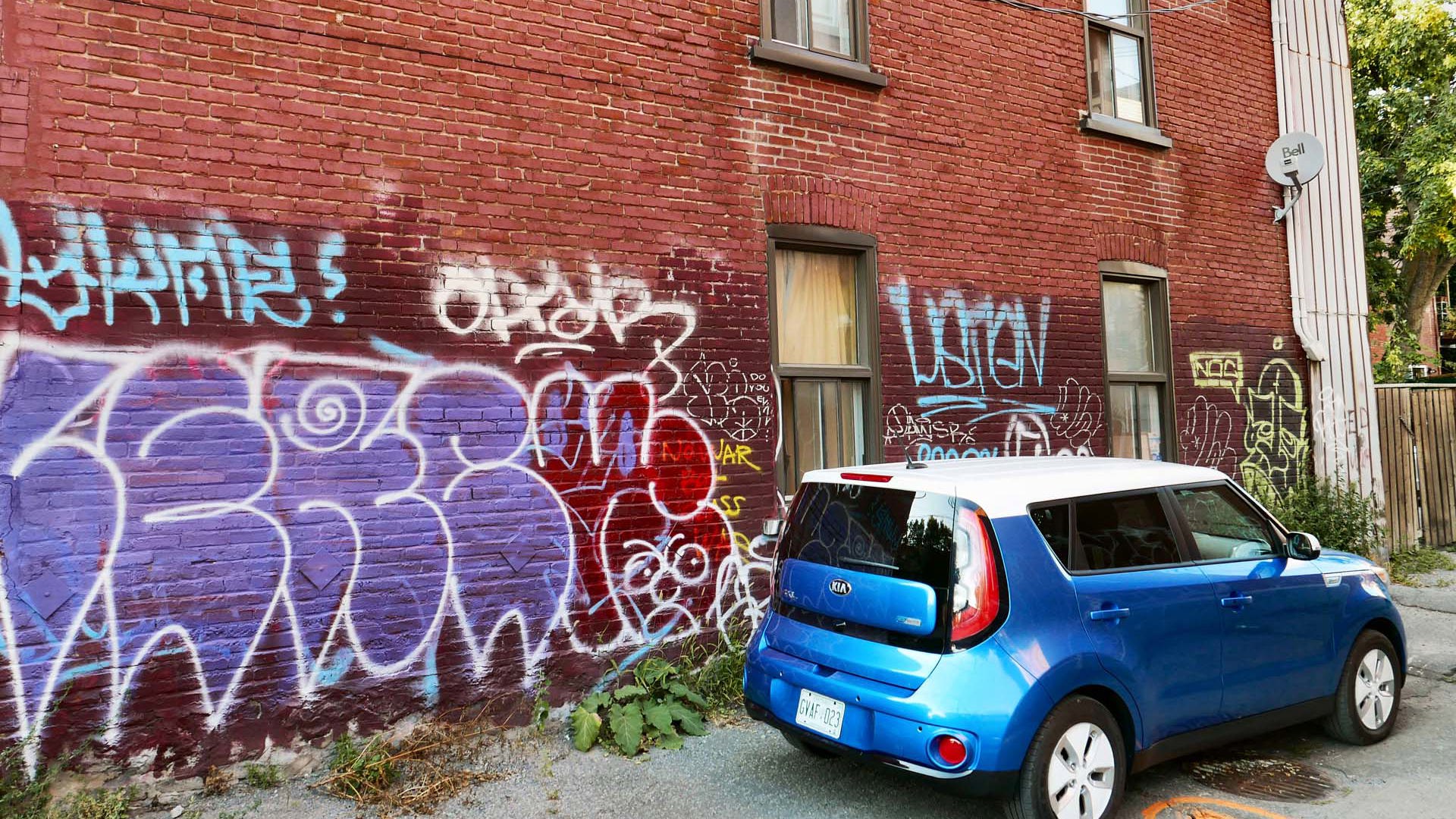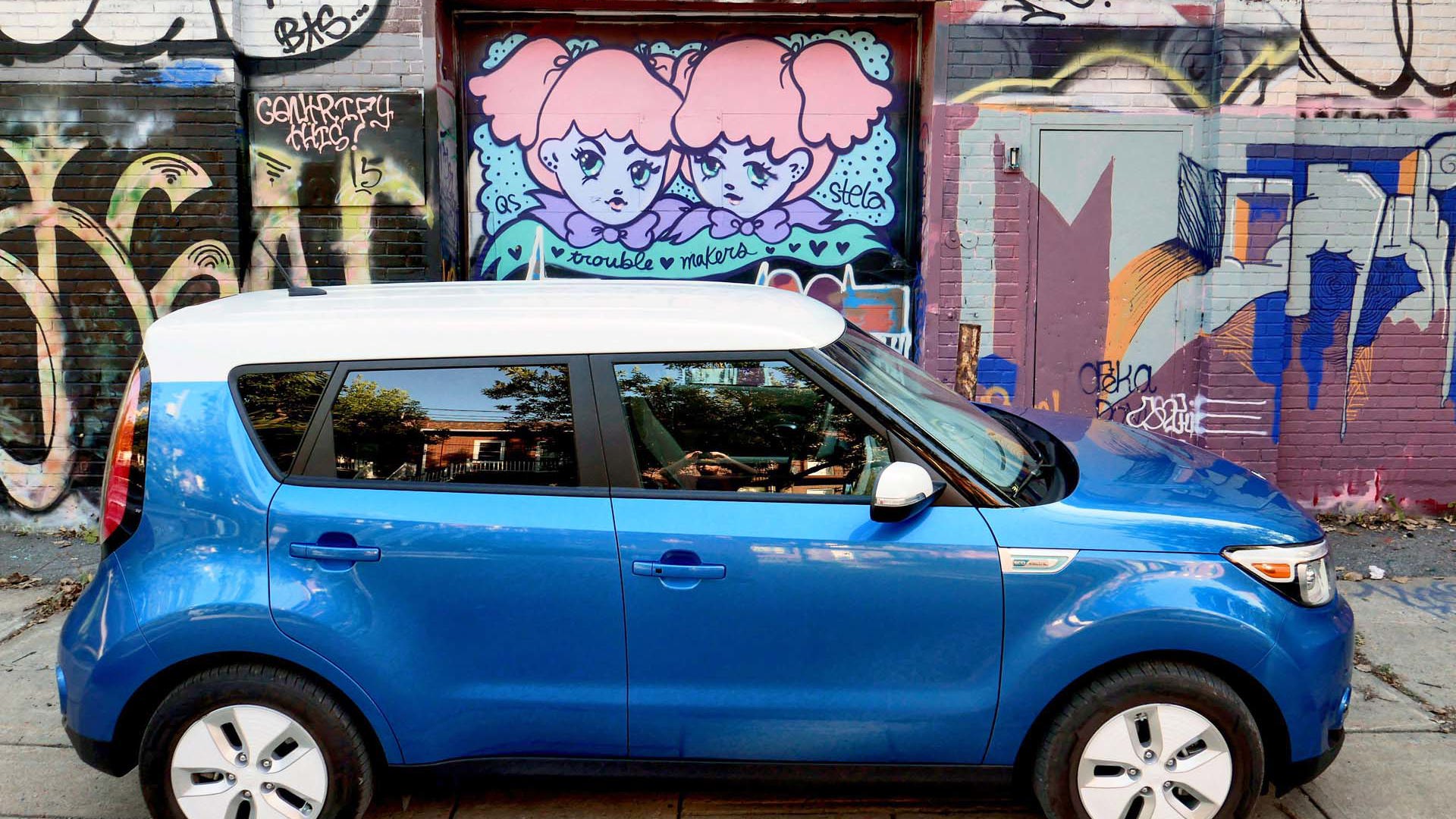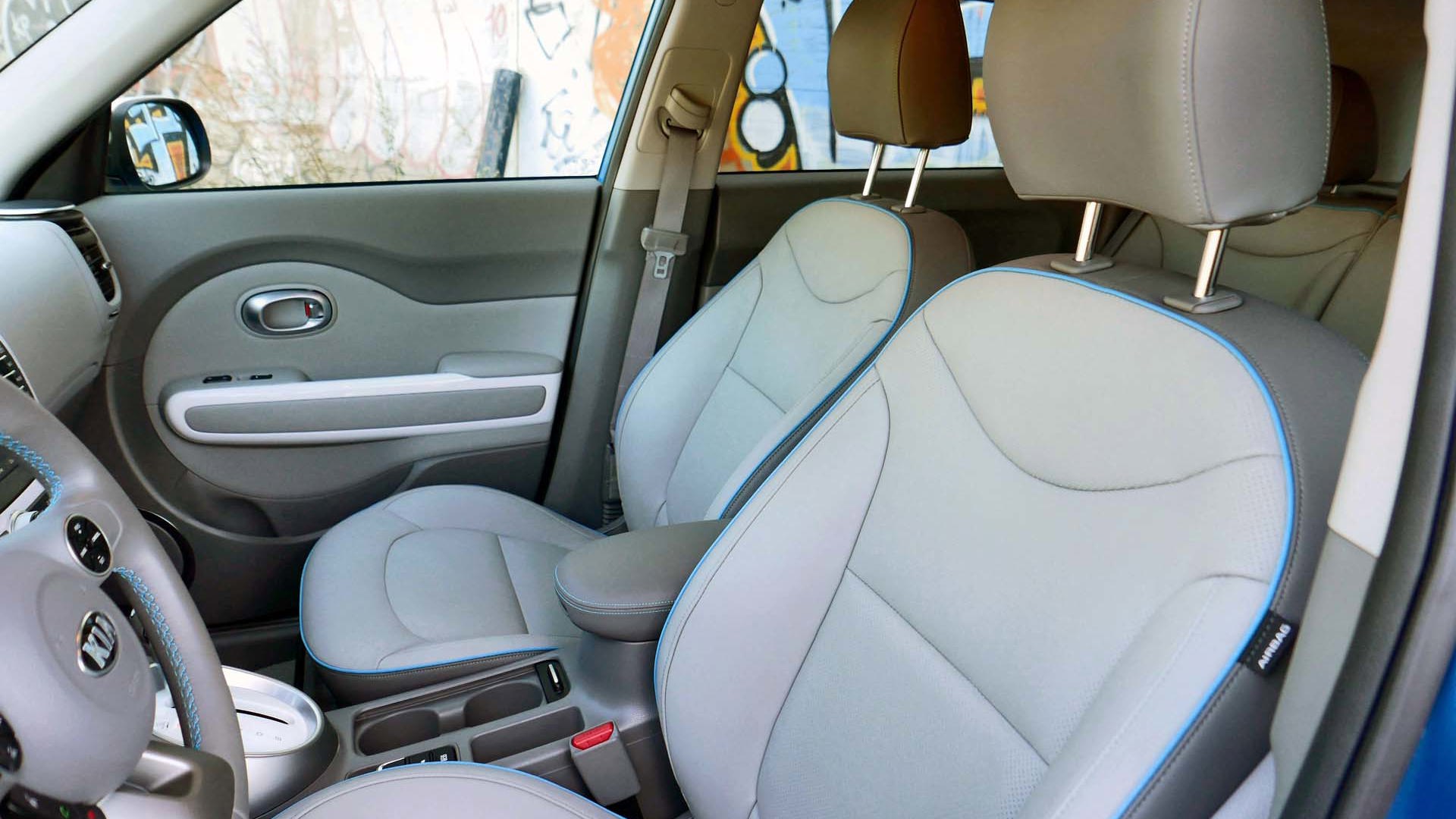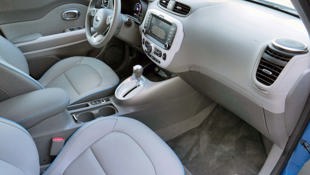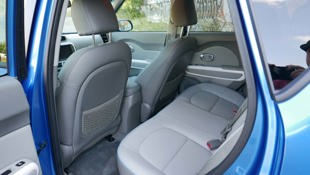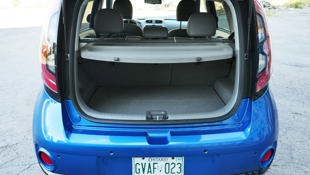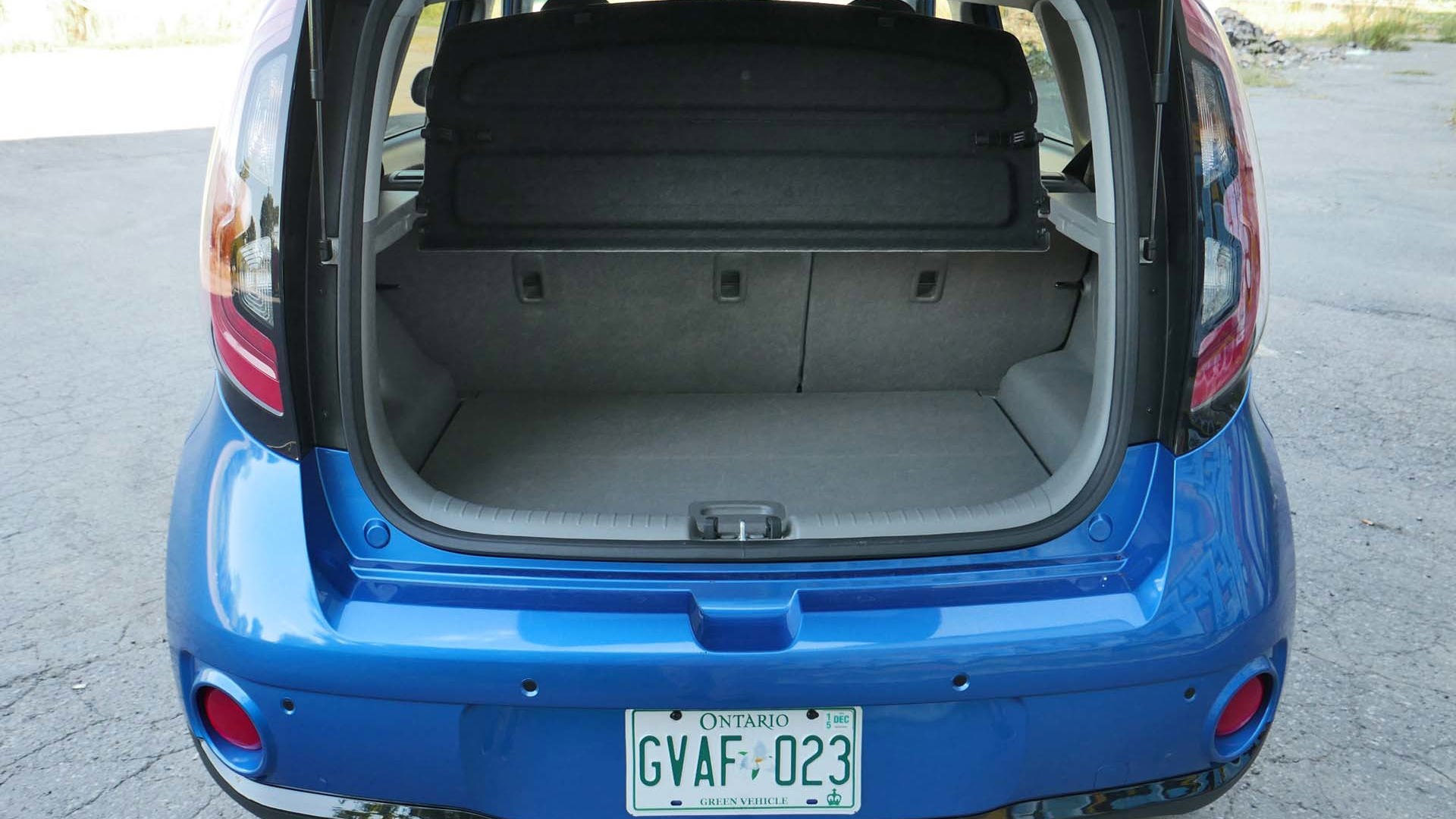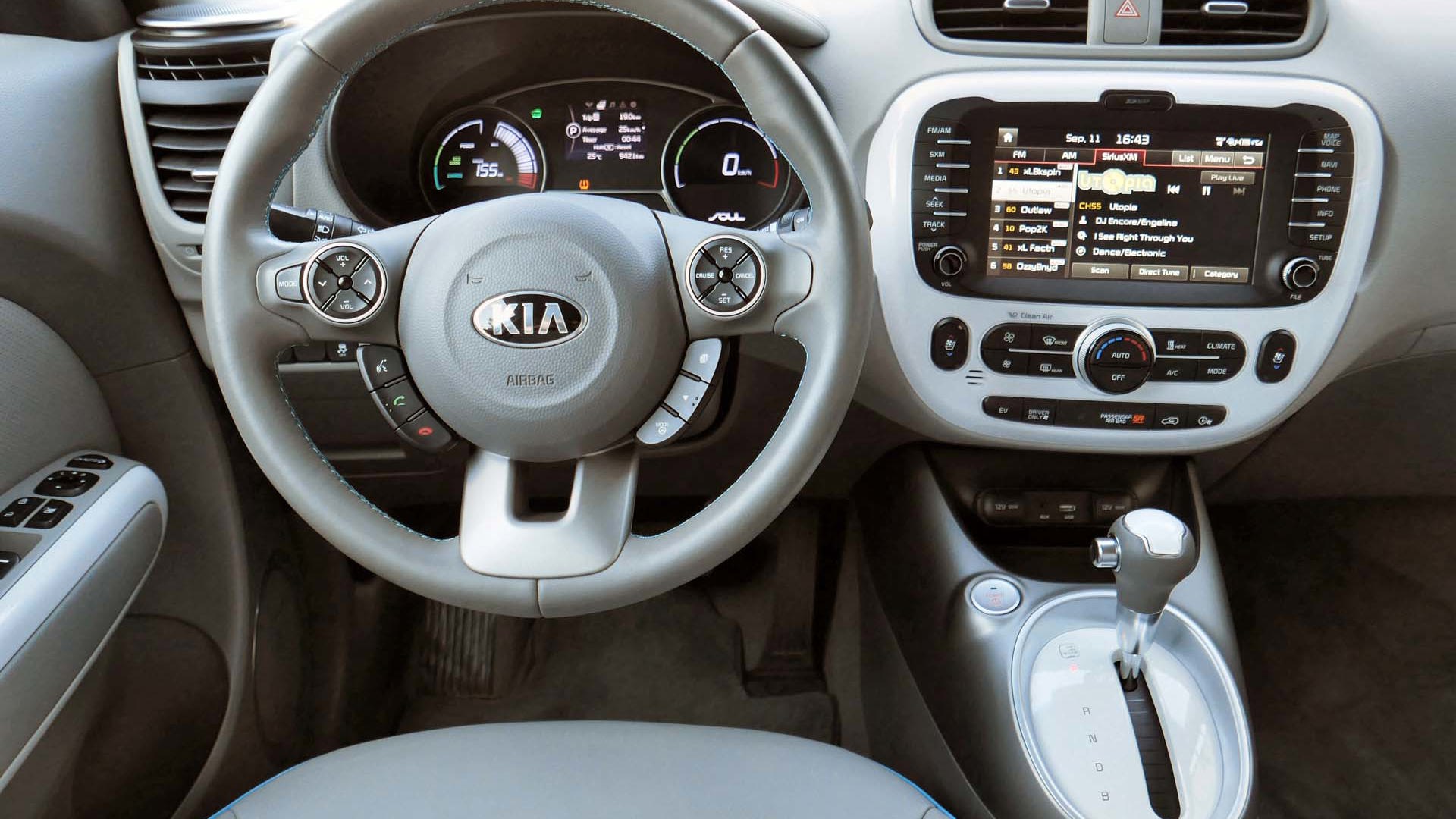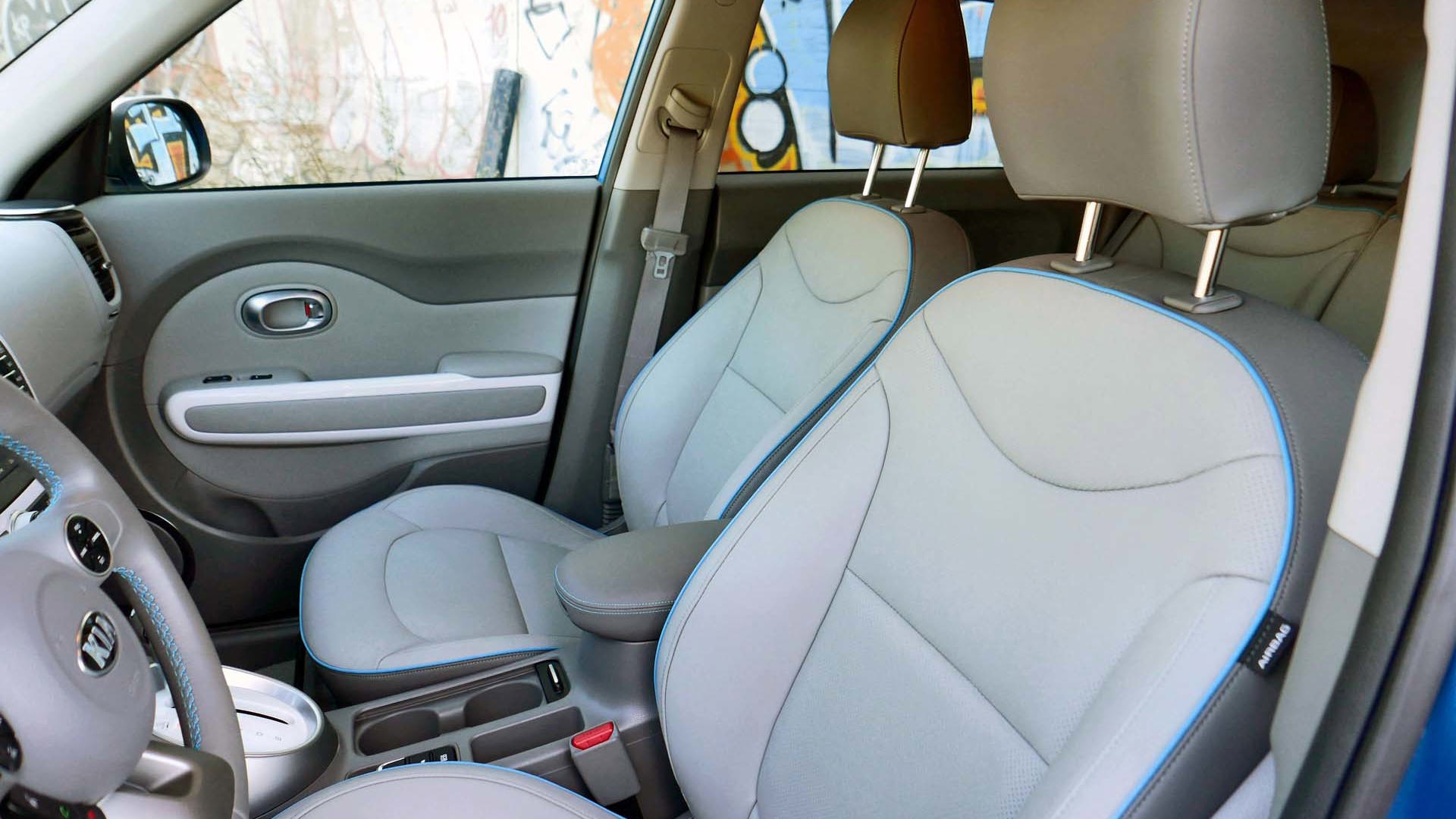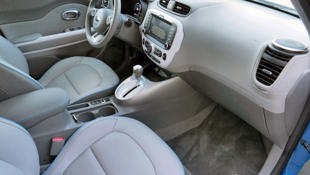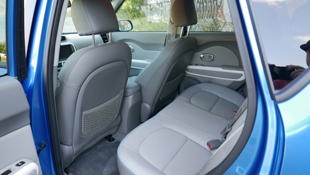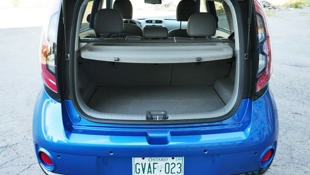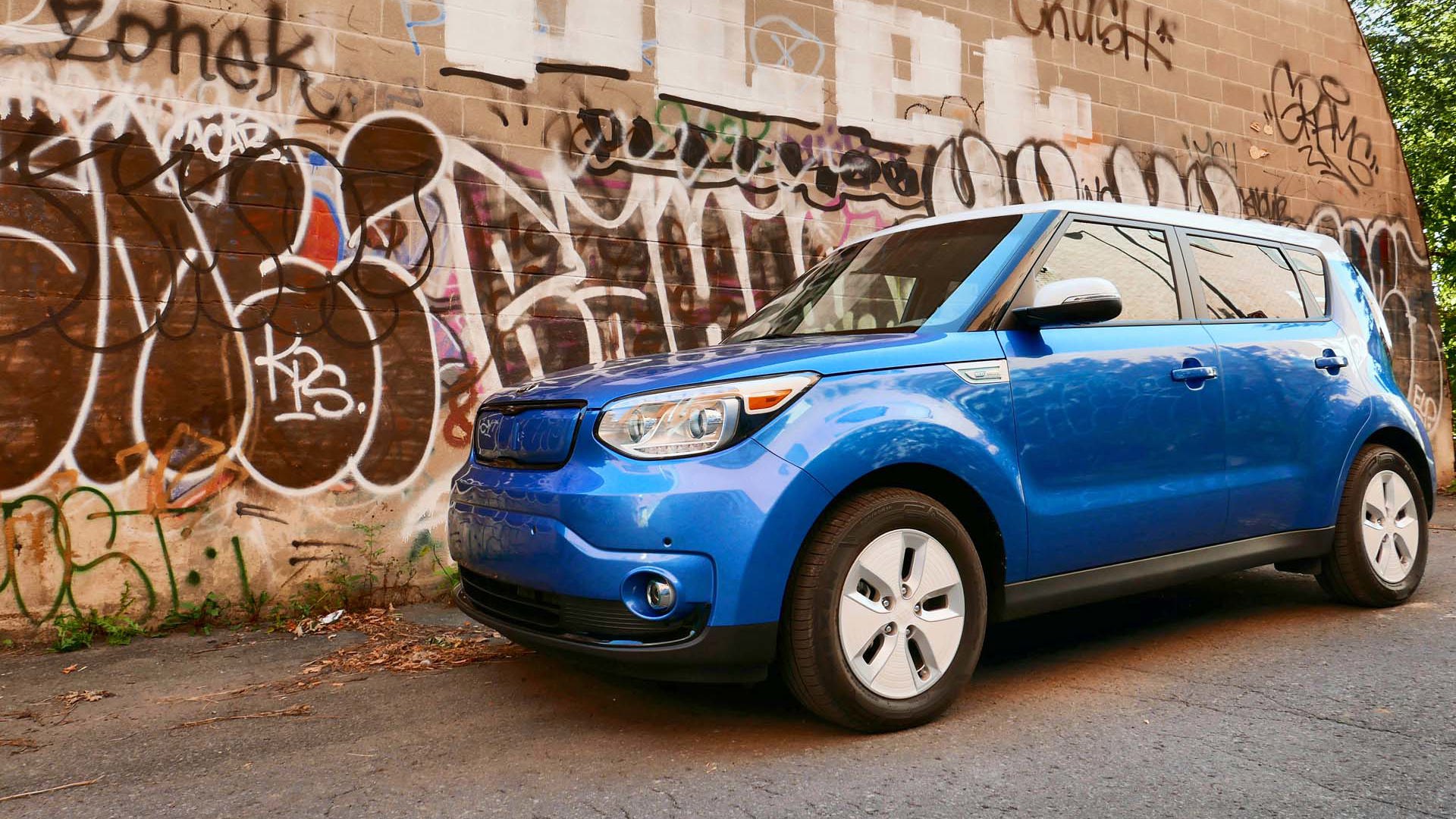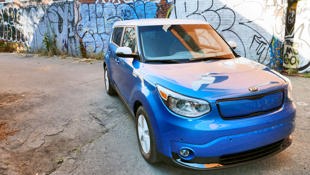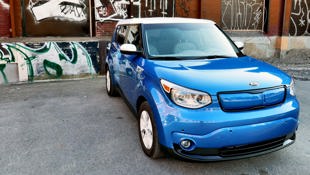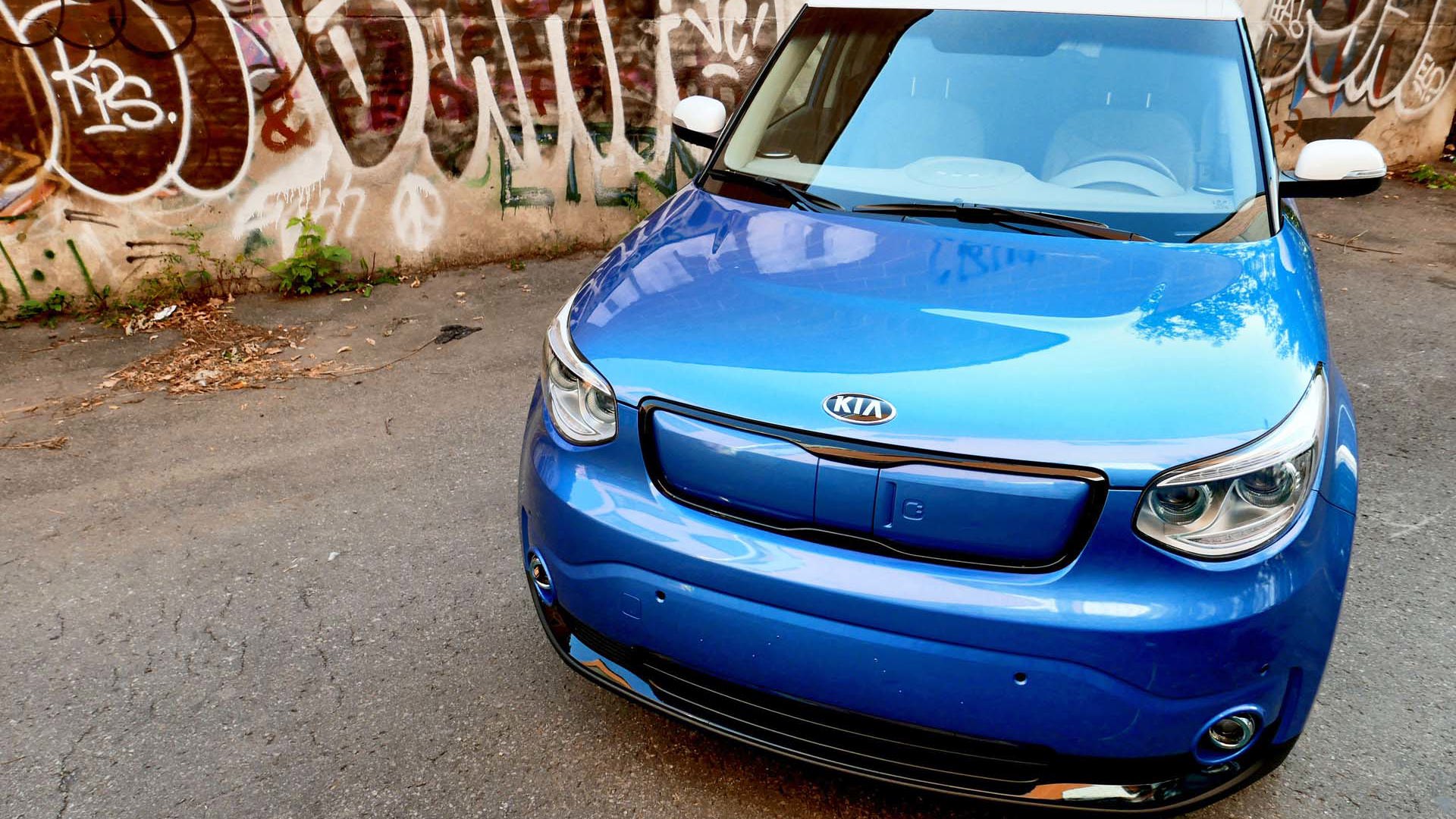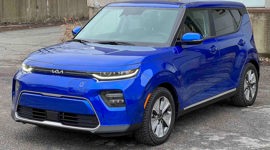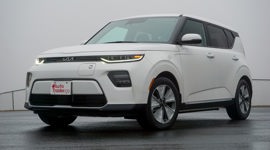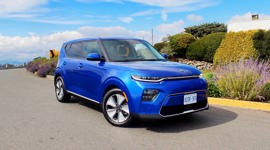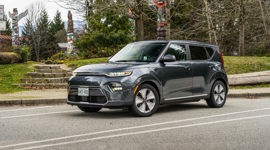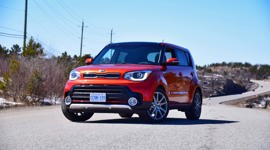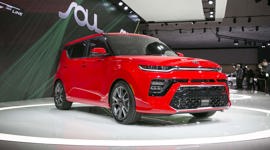Is it possible to swap an electric drivetrain into an established gas-powered model and end up with an even better vehicle? It certainly helps when the company designing the car in question – in this case Kia – made sure to future-proof its compact Soul wagon by including battery-friendly features in its original design. The 2015 Kia Soul EV boasts the second-best range on the Canadian market (just a tick over 150 kilometres), at half the price of the entry-level Tesla Model S (which breaks the 300 km mark), and it loses none of the practicality that has endeared the standard version of the Soul to legions of entry-level buyers.
The best car to park in your garage is always the one that fits the most snugly into your lifestyle.
Still, when evaluating whether the Kia Soul EV outperforms its internal combustion counterpart, I discovered that it really boils down to what you consider important in a daily driver. Forget the traditional metrics: the best car to park in your garage is always the one that fits the most snugly into your lifestyle.
Doppelgangers
The 2015 Kia Soul EV is remarkably subtle about clueing you in to the fact that a whirling storm of electrons, rather than a combustible melange of aerosolized gasoline, keeps it motivated. Sure, the wagon comes in the standard array of eco-friendly colours that the auto industry has seemingly come to an agreement will be sprayed on all battery-powered vehicles – including 'electronic' blue and pearl white – but aside from that, you've got to be detail-oriented to spot the other differences. These include badging on the front fenders, the aero-friendly wheels that diminish the Soul EV's drag profile, and the utter absence of a grille or any form of forward cooling. The Kia's front bumper is a solid piece of plastic that fills in the honeycomb found on the gas model, and while the original grille outline is maintained it now houses the EV's plug door.
Inside it's a similar story, as all the standard Soul design elements are present and accounted for. The only discernible difference between my high-spec EV tester and the gas model was the gauge cluster, which has been transformed into an LCD wonderland that displays battery charge remaining, power output information, vehicle speed, and estimated range.
The Tiny EV Convert: Quick Spin: 2015 Chevrolet Spark EV
It's also worth pointing out that because Kia foresaw the eventual introduction of a battery-powered model, there are no real sacrifices to be made in terms of interior space to accommodate the wagon's power pack. Cargo space is identical to the standard Soul thanks to the decision to locate the battery underneath the rear passenger seat. The end result is a slightly higher position for those riding in the second row but it's something you'd only notice if you'd spent time in past versions of the Soul before climbing into the EV.
Disguising Bulk With Torque
Ask any enthusiast: the best part of driving an electric car is the instant torque provided by the vehicle's motor, which unlike a gasoline engine doesn't need to hit a specific RPM to tap into its optimum powerband. This explains why the 2015 Kia Soul EV feels so willing to surge forward as soon as you push down on the accelerator, despite the fact that it's significantly more portly due to the weight of its battery. 109 horsepower and 210 lb-ft of twist are the official line on the EV's output, with the latter figure representing an appreciable boost over even the most powerful edition of the non-electric Soul. The more modest horsepower rating, however – the base model offers up 130 ponies – is felt at the upper end of the Kia's performance envelope, with forward progress slowing after the 120 km/h mark. The Soul EV's extra mass also informs its less playful handling characteristics, which are further diluted by the low-rolling resistance tires that come with the vehicle.
Range Anxiety? It Happens To Everyone
I'm going to be honest here. No matter how much range an electric vehicle has on offer, I'm always going to be at least a little wary of how my driving habits influence how many kilometres I can squeeze out of a single charge. I blame the auto industry for this reticence to let my guard down, as vehicles like the Kia Soul EV are filled with so many behaviour-modification systems – brake-recharging indicators, eco profiles, constantly-updating range remaining displays that instantly dive whenever I turn on the air conditioner – that my right foot feels almost Pavlovian in its response to whatever positive feedback the car might send my way.
That being said, around town the Soul EV was remarkably adept at keeping itself charged based solely on its regenerative brakes, a system that can be enhanced by shifting the vehicle from Drive to Battery in order to introduce a more aggressive pull at all four wheels on coast-down. On the highway (and if you need the climate control in any way, shape, or form) things are a little less rosy, with range dropping in double-digit increments at higher speeds and during warmer/colder weather.
Still, if you can restrict your daily driving to 100 km or so – and most of us city-dwellers can – you'll have no issue using the Soul EV as a commuter, even if stuck charging the battery at a snail's pace like I was with a 110-volt outlet in my garage. The vehicle offers a list of nearby charging stations in its navigation system that can feed the EV juice at a higher rate of speed (with an 80 percent top-up available in 30 minutes at some locations), but they all seemed to be found at Nissan dealerships here in Montreal, and never convenient to where I was going. The province's online list of available charging stations (likewise that provided by the CAA) was a complete joke to try to use on my mobile phone. Getting to know your local charge points will go a long way towards getting the most out of your Kia, but you'll want to scout out in advance what's available along your route.
Electric Sticker Shock
Range fears might keep away a certain portion of potential Kia Soul EV buyers, but an even bigger red flag is likely to be price. The Soul EV starts at $34,995, and the Luxury model I drove – the only other trim sold in Canada – nearly doubled the base gas-powered Soul's $18,910 window sticker. It's a stiff ask, even for a vehicle as useful as Kia's compact wagon, but it's one that promises to pay back early adopters by way of zeroing out their fuel bills for the duration of their ownership.
Electric cars for the masses aren't here yet, and when they do arrive, premium pricing isn't going to be the hallmark of any successful battery-powered play by a major automaker. From my perspective, the Kia Soul EV's strong points – better off-the-line performance, utility-friendly interior, comfortable ride, and excellent (for its segment) battery range – translate into a package that doesn’t quite overcome the near-luxury cost of driving one home. As an indication of things to come, however, the Soul EV proves that mass market electric cars are taking more than just baby steps away from being heavily-subsidized novelties inspired by restrictive environmental regulations.
| Warranty: 5 years/100,000 km; 5 years/100,000 km powertrain; 5 years/unlimited distance corrosion perforation; 5 years/100,000 km roadside assistance; 8 years/160,000 km hybrid components Competitors: |
| Model Tested | 2015 Kia Soul EV |
|---|---|
| Base Price | $34,995 |
| A/C Tax | $115 |
| Destination Fee | $1,715 |
| Price as Tested | $40,025 |
|
Optional Equipment
Paint ($200)
|
|
